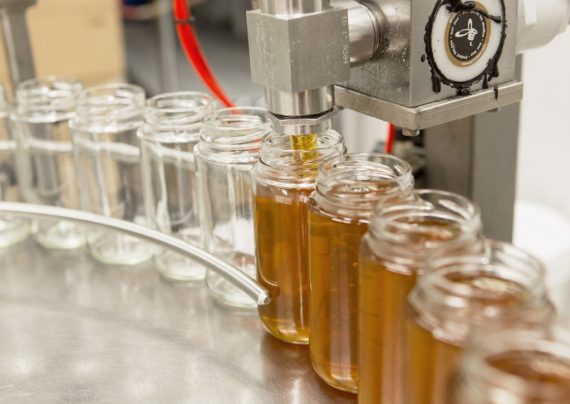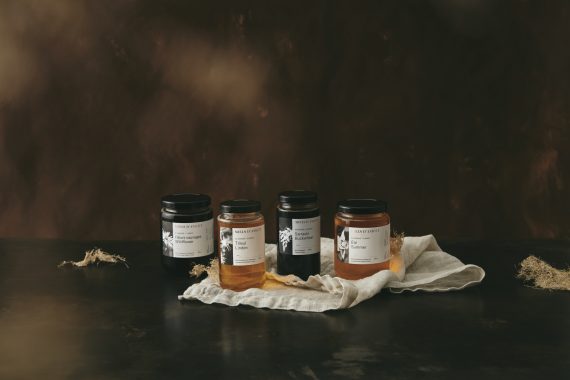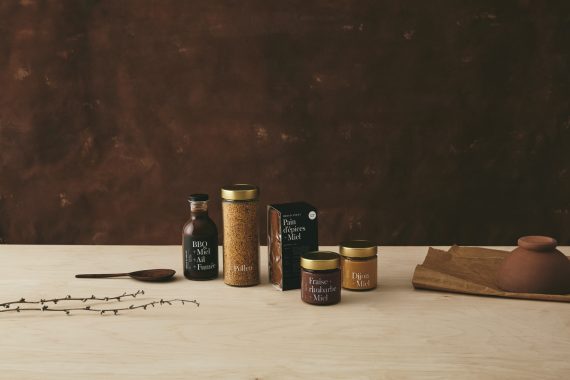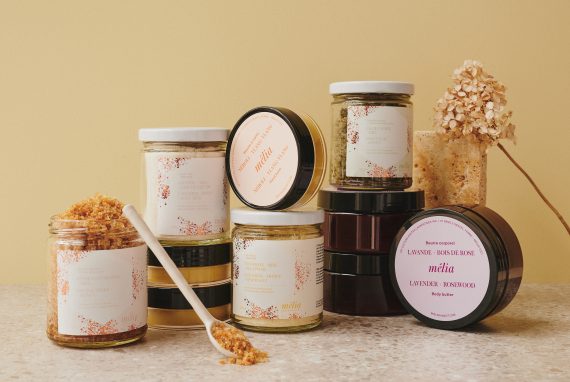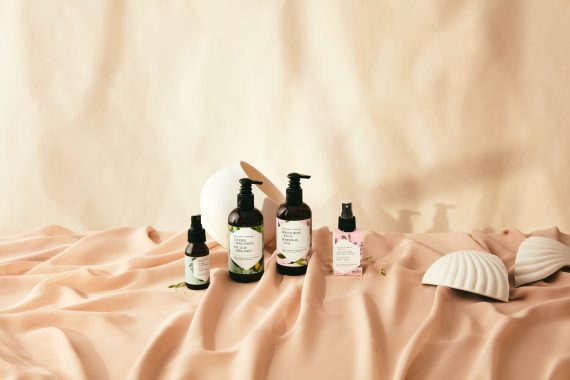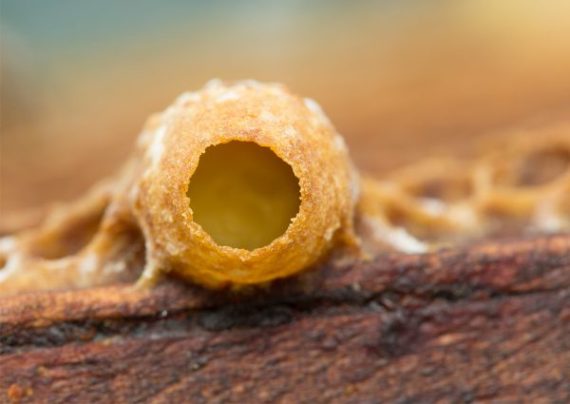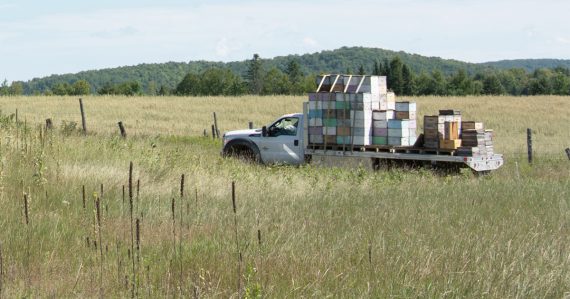
The harvest of honey: a step-by-step process
The harvest of the frames
In spring, the beekeeper ensures to place empty honey frames in the hives in preparation for future nectar flows. A few weeks later, if the weather has been favorable, the bees will have completed their foraging, and the cells will be filled with honey. As soon as the majority of them are capped (sealed with wax), the beekeeper harvests them and takes them to the honey house.
To do this, he first removes the bees from the honey boxes. There are several techniques to achieve this: using a bee escape, which is a grid that limits the movement of bees in the honey boxes to be harvested; employing a blower to temporarily blow the bees into the air to clear the frames; or using a small broom to manually brush away the bees on the combs.
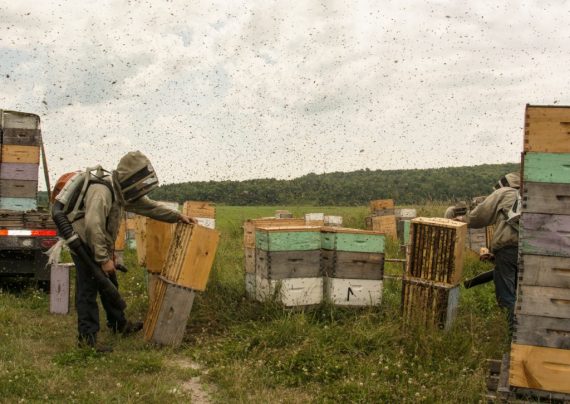
Since the colony needs a reserve of about 35 kg of honey to sustain itself during the winter, the beekeeper only takes what has been produced beyond this amount. If he harvests honey frequently, he can classify it based on floral origins or seasons, thereby offering a range of honeys with varied flavors for the consumer.
Dehumidification
Once the honey boxes are free of bees, the beekeeper brings the boxes filled with honey frames to the honey house to begin the processing steps. The first step is the dehumidification of the honey. In the hive, the bees manage this variable through ventilation, but during the harvest, the presence of unsealed cells, along with transportation and handling, increases the moisture content. The extracted honey must have a moisture content of between 17 and 18% (the same level as when produced by the bees); otherwise, it risks fermenting.
At the honey farm, the honey boxes are placed in a room equipped with dehumidifiers. If the ideal moisture content is maintained, the honey will keep for a very long time. This step is much more challenging in tropical countries, where the climate creates a very high humidity level that is difficult to control. Honeys from these regions often have a shorter shelf life and can ferment easily (the honey bubbles). Honeys with a high moisture content can also be recognized by their more liquid state.

Uncapping and extraction
The second step involves removing the thin layer of wax (capping) that the bees have placed on each cell to seal them. Using an uncapping knife or an automated machine, the capping is scraped off so the beekeeper can extract the honey stored in the cells. This step requires great care, as the same frames will be returned to the honey boxes for the bees to store the next harvest. The less damaged they are, the less wax the bees will have to repair. The capping wax that is removed during this phase will be collected, sold, or used in the production of by-products such as creams and candles. To extract the honey from the cells, the beekeeper uses an extractor, a type of centrifuge that, due to its very high rotational speed, ejects the honey from the cells by projecting it against the walls.
Decantation
The extracted honey is collected in large tanks, where it will rest for about 24 hours, allowing for a first natural decantation to occur. Since wax is lighter than honey, it will rise to the surface. This can be considered a natural filtration.
To maintain the quality of the raw honey, it is essential that no heating occurs during these steps. In its raw state, honey is at its best and this is how it should be enjoyed: raw, whole, and alive! It is then rich in aromas, enzymes, and pollen—valuable elements that impact the taste and therapeutic qualities of honey. Unfortunately, not all beekeepers work the same way or with the same respect for the material provided by nature. Through certain manipulations, they can affect the quality of the honeys they produce.
The jar filling
This step has changed significantly since the last century, when honey was presented in large crystallized blocks and cut with a steel wire to the desired size. Today, given the large volume of honey harvested, beekeepers often cannot jar all the production at once immediately after extraction. They store the honey in tanks or barrels.
Honey that has been stored in barrels will crystallize in the following months; when the time comes to jar it, it will need to be liquefied. This step involves heating, which can affect the quality of the final product. To preserve all the aromas of honey, it should never be exposed to temperatures exceeding 40 °C (104 °F). Overheated, or even worse, pasteurized, honey will lose its original flavor and, consequently, its distinctive character.
